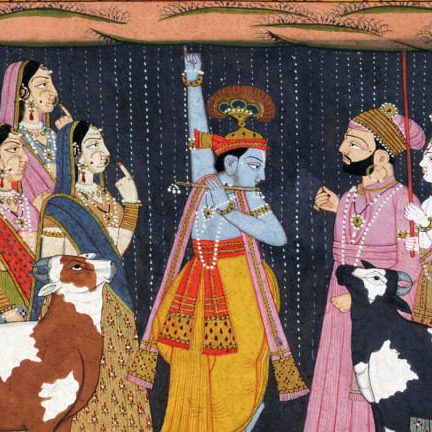Every Hindu must be proud of Sanatana Dharma. Since times memorial our Ancient Sages have scripted this religious order as a Science more than a Religion,
As mentioned in my last article on the number 108, it is said that this is a divine number that compromises of the 12 Rashi’s X 9 Grahas. This simply embodies what we call the circle of life. Now let’s dig deeper into these numbers. Both 9 and 12 are intricately connected to Santana Dharma. In this article let’s focus on the number 9.
When you add up the divine number 108 as 1+0+8 it equals 9.
The number 9 is revered in Hinduism and considered a complete number because it represents the end of a cycle in the decimal system, which originated from the Indian subcontinent as early as 3000 BC. 9 is a very important number for geometry, architecture and angles. It is said there are Nine influencers that are an integral part of Indian astrology. According to our Hindu philosophy, there are nine universal substances or elements: Earth, Water, Air, Fire, Ether, Time, Space, Soul, and Mind.
Navaratri is a nine-day festival dedicated to the nine forms of Durga.
Navaratna, meaning “nine jewels” may also refer to Navaratnas – accomplished courtiers, Navratan – a kind of dish, or a form of architecture.
The number nine is often associated with a divine connotation in the mystical thought and religions across the globe from ancient times.
Our scriptures talk about Goddess Durga the divine female power synonymous with creator of the universe, the embodiment of pristine purity and truth, annihilated the demons representing the evil forces.
Goddess Durga waged a war for nine days to combat the potent rakshasas (satanic power) and bestow deliverance to the world in general.
In Santana Dharma, Rishi Vyas created 9 Puranas, 108 Maha Purana (Upanishads). Our ancient Rishi’s have written that are 4 Yugas. Now when we look at the number of years each Yug lasted and add up all the numbers, yet again we land on Nine.
Satyayug – consists of 172,800 years (1 7 2 = 18 = (1+ 8 = 9)
TretaYug consists of 1296000 years (1 2 9 6) = 18 = (1+ 8 = 9)
DwaparYug consists of 864000 years (8 4 6) = 18 = (1 + 8 = 9)
Kalyug consists of 432000 years (4 3 2) = 9
According to Sanatana Dharma, a Healthy Person normally takes 21600 breaths in a day which again gives Number 9 after summing up (2 1 6=9). In Hindu astronomy we recognize nine planets, collectively knows as Navagraha’s, whose movements and configuration we believe would affect the lives and destinies or the state (graham) of beings in different worlds. These nine planets are the Sun (Surya), the Moon (Chandra), Mars (Managala), Mercury (Budha), Jupiter (Brihaspathi), Venus (Sukra), Saturn (Sani), Rahu and Ketu. However, in the temples they all are worshipped collectively or as a group and very rarely alone.
In addition, our Hindu Astronomy speaks of 27 constellations in our galaxy, and each one of them has 4 directions, and 27 * 4 = 108(1 0 8=9), In other words the number 108 covers the whole galaxy.
Our Astrologers consider Number 9 as the number of Brahma, the Creator.
Now let’s get to Geometry and angles: A Circle degree is 360 which is further (3 6=9).
If you multiply nine by any whole number (except zero), and repeatedly add the digits of the answer until it’s just one digit, you will end up with nine. Go ahead and try the Nine tables that we used to repeat every day.
2 × 9 = 18 (1 8 = 9); 3 x 9 = 27 (2 7=9)
What is it about Nine that is so unique? All of the above reasons make Nine a Divine Number in Sanatana Dharma.
On a more spiritual angle the Bhagavata purana mentions nine forms of devotion: sravanam (hearing about God), kirtanam (singing the praise of God), mananam (remembering God), padaseva (serving the feet of God), archanam (worshiping God), mantram (offering prayers to God), seva (serving the cause of God), maitri (friendship with God) and saranam (surrender to God).
The human body is considered as a city of nine gates which correspond with the nine openings (two eyes, two ears, two nostrils, navel and two excretory openings). Because atman or the self resides in it, it is also called a temple with nine gates.
In the foundation laying ceremony of a temple construction, it is a tradition to place nine jewels and nine forms of grains (Navadhanyas) in the earth where the foundation stone is laid and also where the idols are installed.
No wonder the number nine is associated with a divine connotation in Hinduism from ancient times.
Is this a mere coincidence or is there a deeper connection to this? Nine seems to be integral part of life and our very existence. Remember the Number 108 that I wrote about in my last article. 9 and 12 are a part and parcel of Santana Dharma. You just have to be amazed by the depths to which our Religion goes. No wonder we say Hinduism is a Way of Life rather than a strict boundary laid out in many other religious orders.
Jai Ho!!! To all our Ancient Rishi’s
Feature Image Source

